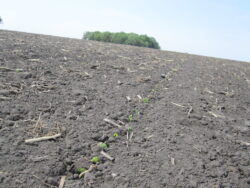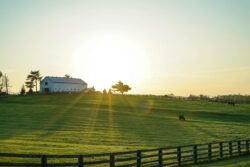Spring planting of Kentucky Bluegrass is contingent on achieving specific soil temperatures and conditions.
Ideal sowing should be timed when soil temperatures are consistently between 50-65°F.
For most regions, this falls within mid-March to mid-May, but adjustments should be made based on local climate conditions to ensure the best germination and establishment rates.
Key Considerations for Spring Planting of Kentucky Bluegrass Seed
Understanding Kentucky Bluegrass’s preferences is crucial for its successful growth.
This grass type stands out for its durability, ability to recover from wear, and the lush, blue-green color it adds to landscapes.
Achieving the best results involves:
- Soil Temperature: A critical factor for seed germination.
- Seasonal Timing: Adjust planting to local climate, aiming for mid-March to mid-May.
- Soil Preparation: Ensuring good seed-to-soil contact is pivotal.
- Moisture Management: Soil should be kept moist, particularly during the germination phase.
FAQs on Spring Planting of Kentucky Bluegrass
Q: How do I know when the soil temperature is right for planting Kentucky Bluegrass?
A: Use a soil thermometer to measure temperature early in the morning for the most accurate reading.
Q: Can frost harm newly planted Kentucky Bluegrass seeds?
A: Yes, a late spring frost can impact germination. Monitor local frost dates and plant after the last expected frost.
Q: What’s the difference between planting Kentucky Bluegrass in spring vs. fall?
A: Spring planting jumpstarts growth after winter, but fall planting benefits from cooler temperatures and fewer weeds.
Q: How soon after planting can I expect to see Kentucky Bluegrass sprout?
A: Germination typically takes 14 to 30 days, with soil temperature and moisture being key factors.
Q: Should I fertilize Kentucky Bluegrass immediately after planting in spring?
A: Wait until you see sprouts before applying a light starter fertilizer to support early growth without overwhelming young grass.
Nurturing Your Kentucky Bluegrass Lawn
Transitioning from planting to maintenance, Kentucky Bluegrass requires diligent care, including appropriate watering, fertilization, and mowing practices, to develop into the dense, vibrant lawn many desire.
In Summary
- Plant when soil temperatures reach 50-65°F, usually mid-March to mid-May.
- Soil preparation and moisture management are crucial for successful germination.
- Spring planting requires monitoring to avoid late frosts that could impact seed viability.
Sources and Further Reading
- Jonathan Green’s Guide to Kentucky Bluegrass: Offers a comprehensive overview of Kentucky Bluegrass, including detailed planting instructions and maintenance tips. Read more at Jonathan Green.
- This Old House on Planting Grass Seed in Spring: Provides insights and expert advice on the best practices for planting grass seed in the spring, suitable for homeowners looking to establish or rejuvenate their lawns. Explore the guide at This Old House.
- Gardening Know How’s Kentucky Bluegrass Planting Guide: A detailed article on how to plant and care for Kentucky Bluegrass, emphasizing the conditions necessary for optimal growth. Learn more at Gardening Know How.



